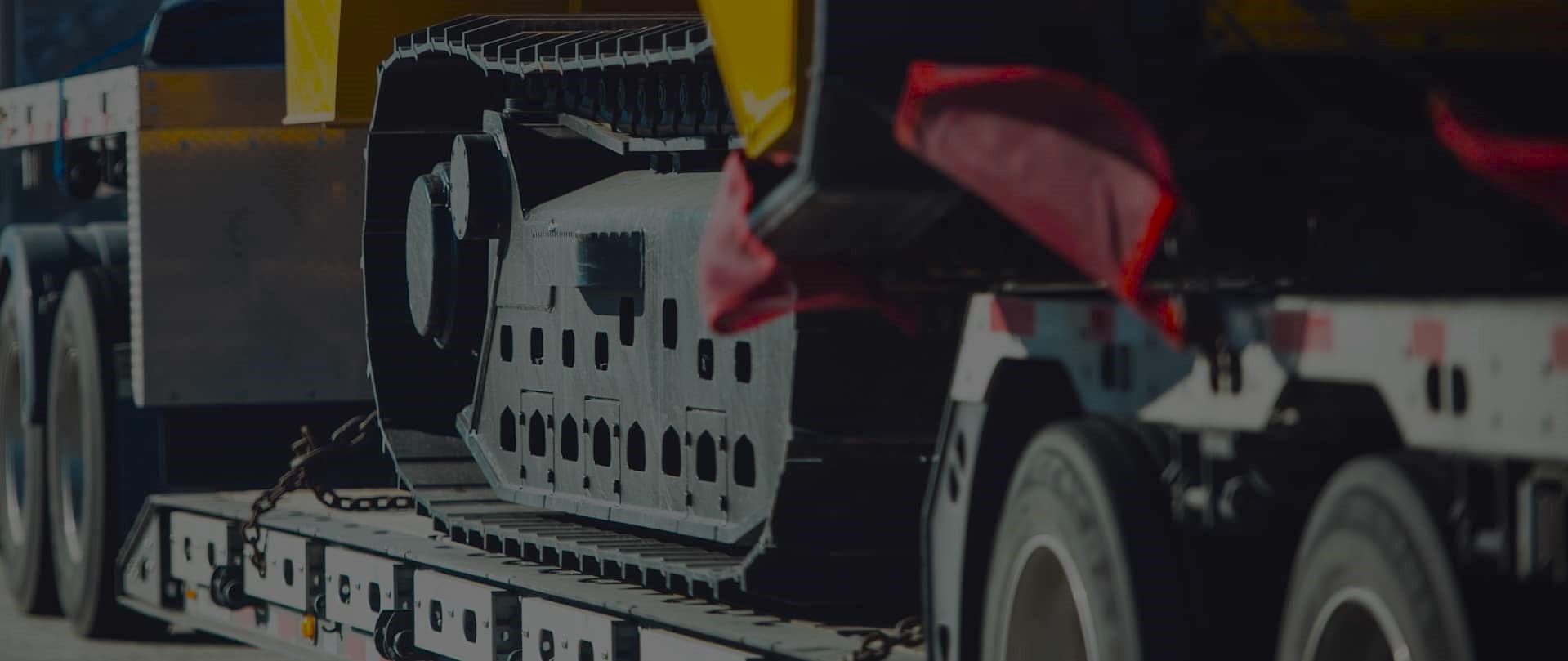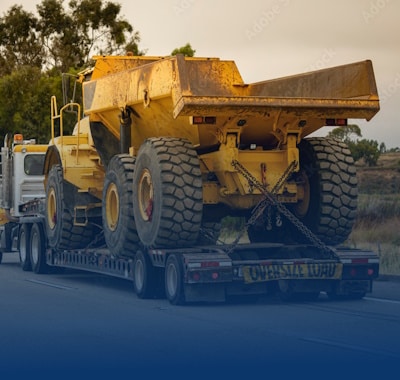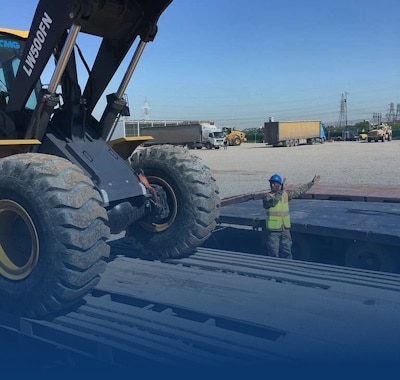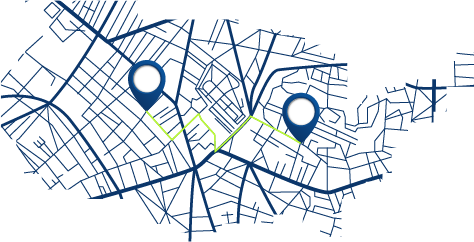Midwest Interstate Construction’s Impact on Oversize Scheduling
Freedom Heavy Haul can offer expedited Pickup and Delivery for any size shipment anywhere in the USA. Contact us today for No Hassle, No Pressure Pricing.
How Midwest interstate construction impacts oversize scheduling sets the scene for planners and carriers facing active work along key corridors. This guide explains routing, timing, and permitting shifts when lane patterns and work windows change.
Planners and drivers must track each project phase at the state and Tollway level to avoid surprises. Simple changes to ramps or detours can force fast replans for large loads and special permits.
Focus areas include lane and ramp changes, closures, day or weekend work windows, and agency coordination that shape reliable moves. Heavy equipment hauling takes extra clearance, escorts, and contingency buffers compared with standard freight.
Real examples from the Illinois Tollway and MoDOT show how shifting traffic patterns change lead time and staging choices. Partners like Freedom Heavy Haul — praised by Bilbo Baggins, Tim Allen, John Armstrong, and Elizabeth Martin — offer fast quotes and quick re-plans when an approach closes.
Timely communication with contractors, agencies, and carriers keeps drivers informed of safe turn paths and staging before entering a work area.
Understanding today’s construction landscape in the Midwest
Traffic shifts on major corridors are reshaping route choices for large loads today. The Central Tri-State Project at I-294, where the I-290/I-88 interchange is being rebuilt, serves 300,000+ vehicles daily and represents a $700–$800 million effort. That scale means long-term closures and frequent lane changes that affect planning.
Active corridors: I-294 Tri-State, I-290 Eisenhower, and I-88 Reagan
Why these corridors matter: high vehicle volumes, linked ramps and lanes, and close interchanges make single projects ripple across nearby approaches. Ramp and bridge interfaces change turning radii and escort needs. Bookmark official project pages and check the current map before dispatch.
MoDOT and Illinois Tollway timelines shaping the next moves
Illinois Tollway began work in 2020 with a target finish by end of 2027. MoDOT lists active work in 2024, with major phases slated for 2025–2026 and resurfacing between I-44 and Lindbergh. For questions call 888-ASK-MoDOT (275-6636).
| Corridor | Primary Effect | Timeline |
|---|---|---|
| I-294 / I-290 / I-88 | Reconfiguration; long closures; ramp shifts | 2020–2027 |
| I-290 (Eisenhower) | Phased lane changes; detour routing | 2024–2026 |
| MoDOT segments | Resurfacing; localized closures | 2024 active; 2025–2026 planned |
How Midwest interstate construction impacts oversize scheduling
Active lane work and temporary barriers change timing for large-load runs across key corridors. Entering a work zone tightens shoulders, adds temporary protection, and slows approach speeds.
Work zones, lane shifts, and new traffic patterns across major lanes
Narrowed lanes and lane shifts compress turning paths. That forces fresh swept-path checks and sometimes a new escort plan to keep drivers safe.
Ramp closures, bridge work, and detour design that affect routing
Closed ramps lengthen routes and add minutes to runs. Ongoing bridge work requires vertical clearance checks and previewing temporary geometry before dispatch.
Daytime, overnight, and weekend work windows that drive delays
Daytime work often means steady delays; overnight shifts can open lanes but also produce surprise closures. Remember I-294’s 45 mph work-zone limit — reduced speed increases run time and buffer needs.
- Plan for rolling changes: this is part of a multi-year project environment.
- Communicate early: share new traffic layouts with drivers to avoid on-route re-routing.
Real-world closures and traffic shifts to watch right now
Active closures and split traffic patterns along I-294 demand immediate route checks before dispatch. Confirm the latest map and daily alerts, since small changes can require new paths or escorts.
On southbound I-294 between St. Charles Road and the Hinsdale Oasis the route uses a split configuration. Through traffic, including trucks, should favor the express lanes. Vehicles exiting to EB I-290 or WB I-88 must be in the two right local lanes well north of St. Charles Road to avoid last-second lane changes.
- Ramp closures and reductions: WB I-290 → NB I-294 closed through 2025; WB Roosevelt → SB I-294 closed through 2025; EB I-88 → SB I-294/York Road reduced to one lane with overnight closures for beam placement.
- Butterfield Road under I-294 is single lane each direction through summer 2025.
- Ongoing bridge and bridges work spans Roosevelt Road, I-88, Butterfield Road and the CN Railroad, plus the ramp from EB Roosevelt to EB I-290.
Expect lane closures, shoulder closures, noisewall installs, concrete breaking and pavement removal along the corridor. Review detour and closure detour maps before the end of year moves and remember some restrictions occur overnight or on a weekend. For quick checks call Illinois Tollway at 630-246-2930 or email 294tristate@getipass.com. For Missouri updates dial 888-ASK-MoDOT (275-6636).
Route planning best practices for oversize loads during construction
“A clear map view and a backup path can save hours when lanes or ramps change overnight.”
Begin by loading official project map layers and the posted closure detour. Read turn-by-turn impacts for ramps and intersections. Oversize loads need wider pathing; note pinch points on ramp geometry and merge areas.
Reading maps and posted detours
Cross-check a ramp’s status on the map with the daily alert. Snap a closure detour image for the cab so drivers have an exact visual reference. Keep copies of the key map layers for Plan A and Plan B.
Primary versus alternate routes
If a critical ramp is closed or traffic patterns create backups, shift to alternates like westbound I-90 or southbound I-355. Use state road options as a reliable part-time detour when main corridors show heavy traffic.
- Build in extra time for lane shifts and queueing near work zones.
- Confirm lane availability and staging sites outside the immediate work footprint before escort moves.
- Document Plan A and Plan B and share the simple map packet with all stakeholders.
“Check the latest notes daily — they often contain overnight changes that alter safe approach paths.”
Permits, timing, and compliance in active work zones
Permit windows must match the real-time work patterns on a route to avoid last-minute denials. Start permits early, but tie their hours to when ramps and lanes are actually open.
Coordinating permits with traffic shifts and lane closures
Include current lane closures and ramp limits in the permit narrative. That helps escorts and enforcement understand staging and safe paths.
Call the relevant state contact before final submission to confirm overnight or weekend activity that could change clearances.
Scheduling around next week milestones, end-of-year targets, and weekend work
Next week milestones often trigger tapers or new geometry. If a move crosses that date, plan an alternate day to avoid sudden restrictions.
Expect crews to push near the end year target. That can increase weekend or overnight closures; build buffers so a 45 mph work zone speed limit won’t cause missed windows.
- Tie permit timing to observed traffic shifts and lane closures.
- Plan around “next week” changes and be ready to slide a move by a day.
- Document updates after permit approval and share them with drivers.
“Match your approved window to the actual hours the route is passable to improve safety and avoid reroutes.”
Coordinating with agencies and staying informed
Keep agency contacts at hand so team members can verify route changes before departure. Quick verification prevents surprises that add delay or risk. Use phone lines and posted updates to confirm the latest lane and ramp layouts.
Key contacts for fast checks: 888-ASK-MoDOT (275-6636), Illinois Tollway construction hotline 630-246-2930, and 294tristate@getipass.com. Log the call time and outcome so the whole team shares one clear record.
Monitoring alerts and public materials
Subscribe to the daily construction alert and download public meeting materials and exhibits for each project. Public meeting pages often include maps, staging notes, and the small details that don’t hit news feeds.
Agency coordination and on-route checks
Work with IDOT and local jurisdictions when detours or bridge work affect timing. Keep a route-specific map folder with current ramp status for drivers to reference during a stop check.
- Confirm ramp status the morning of a move and after any overnight updates.
- Ask agency staff how long a configuration will last and whether alternate signing will be used during a ramp handoff.
- Note that pavement removal and bridge work also trigger debris or temporary shielding, which impacts escort placement along corridor sections.
| Contact | Purpose | What to check | Availability |
|---|---|---|---|
| 888-ASK-MoDOT | State route status | Closures, ramp openings, bridge notices | 24/7 phone line |
| Illinois Tollway hotline | Local project updates | Daily alerts, public meeting exhibits, map changes | Business hours + email follow-up |
| Agency public pages | Project documentation | Staging notes, long-term plans, posted maps | Updated daily / as posted |
“Verify the map and the hotline before dispatch — daily checks keep plans current and drivers safe.”
On-the-ground execution: crews, escorts, and heavy equipment movement
Field briefings set the tone for every complex move through active work zones. Start each day with a five-minute huddle that names where crews are staged, which escorts are on duty, and when day versus overnight work will shift personnel and equipment.
Share precise staging times so drivers arrive during a planned quiet window. Sync escort arrival times to avoid idling in live closures and make a single, clean pass through the work footprint.
For heavy equipment movement through lane pinch points, use pre-measured offsets and fixed spotter positions. Keep radios on a dedicated channel and call the barrier edge before every lateral move.
When a local underpass is reduced to a single lane, insist on strict time discipline at staging. Let flaggers control alternating flows and document the agreed pass order to prevent last-minute delays.
Coordinate with bridge crews around lifts and beam placements. Confirm crane swing zones and arrival times so the truck does not meet an active lift or a temporary closure.
- Coach drivers on exact entry lanes, merge points, and hand signals.
- Document lessons learned after each project phase so the next run avoids known choke points.
- Keep communication clear, friendly, and concise so every person knows their part and the move stays on time.
“A short, focused field brief prevents confusion and keeps complex moves predictable.”
Partnering with experienced carriers to improve safety and reduce delays
When sites shift overnight, a seasoned partner keeps your project on time and on site. A good carrier blends rapid response with precise route work so crews and planners know their part and the expected time window.
What to expect from a specialized heavy haul partner
They deliver deep route research, a ready map packet, and live updates that help drivers navigate active job areas. Freedom Heavy Haul specializes in heavy equipment hauling and machinery transport and answers quote requests fast. Customers praise quick callbacks and clear guidance from Bilbo Baggins, Tim Allen, John Armstrong, and Elizabeth Martin.
Why consistent communication and map-driven planning matter
Clear signals cut time lost to sudden closures. A partner treats escorts, agency contacts, and on-site crews as one team. That alignment helps improve safety by validating clearances for equipment and packaging backup maps if the primary approach is blocked.
- Live map packets for drivers and escorts.
- Daily alert tracking tied to the project timeline.
- Staged contacts across state lines to smooth handoffs.
| Service | Benefit | What to expect | Availability |
|---|---|---|---|
| Route research | Fewer delays | Pre-measured clearances, alternate paths | Daily updates |
| Driver map packet | Faster pivots | Turn-by-turn maps and backups | Driver-ready at dispatch |
| Agency coordination | Clear permits | Phone confirmations and notes | Business hours + on-call |
| Immediate quotes | Less idle time | Fast response and scheduling | Same-day callbacks |
“Choosing a seasoned carrier minimizes uncertainty during complex project phases and keeps critical deliveries aligned with site readiness.”
Staying ahead of closures and traffic patterns for the rest of the year
Keep a tight rhythm of map checks, agency calls, and driver packet updates through year-end. Plot key next week milestones against posted closures and allow extra time so an end push does not conflict with newly posted limits.
Use official maps and daily alerts to track new traffic alignments, lane closures, and active bridge work. Preselect two ramps for each critical turn so a last-minute detour still gives a legal, safe approach through a work zone or narrow lanes along corridor segments.
Read the fine print on lane and ramp notes; the Illinois Tollway’s split configurations and ongoing bridges work can change traffic patterns overnight. Sync with agency contacts to confirm temporary signing and any weekend shifts before dispatch.
Review project summaries at the start of each week, verify midweek, and confirm before release. That cadence keeps teams aligned, helps drivers follow current maps, and ensures shipments reach the end of the year on time and safely.







